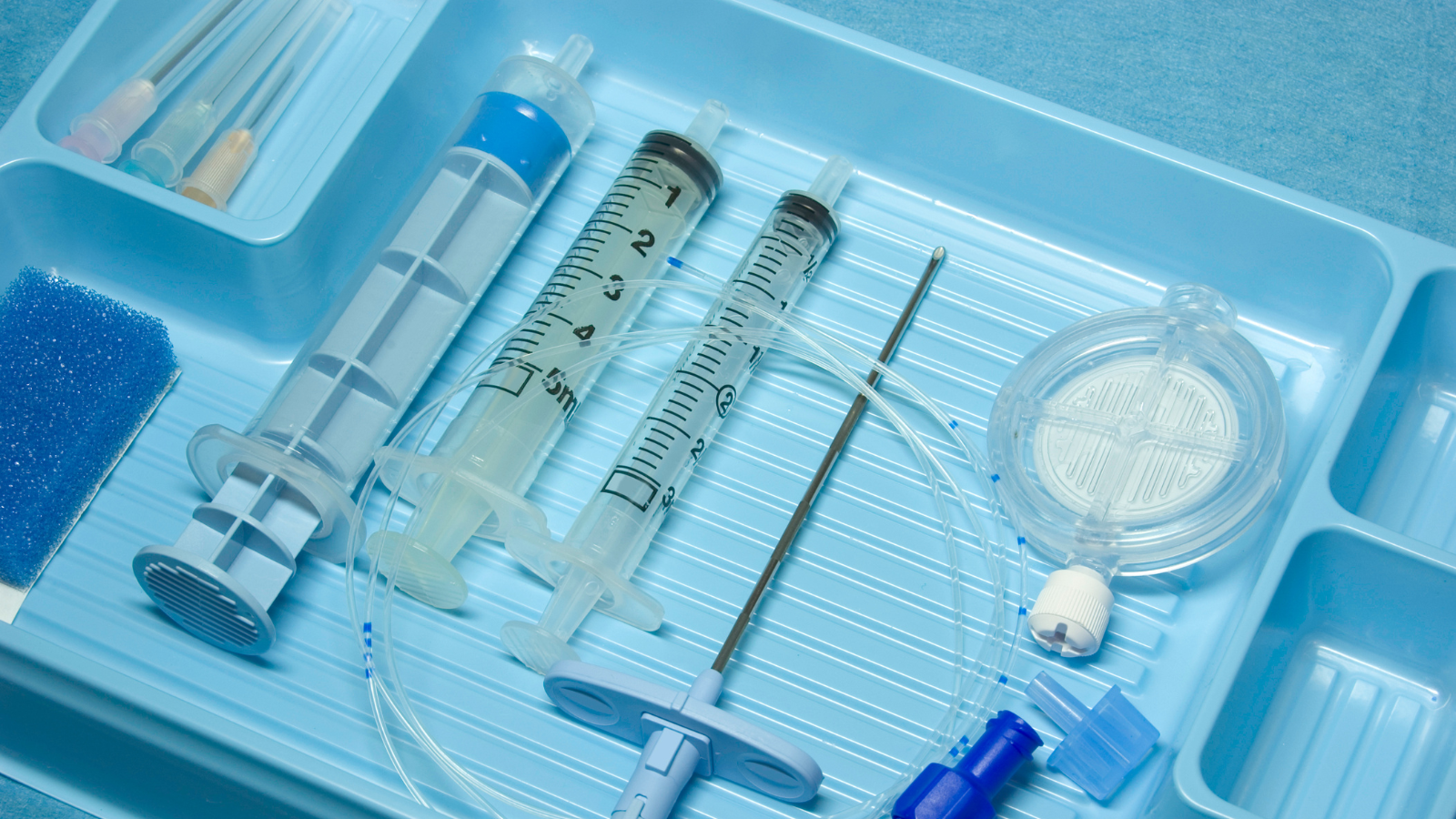It’s a ‘Kit’astrophe!

Tips on the Epidural Kit Shortage from the SOAP Patient Safety Subcommittee,
August 2022
Several centers across the country are reporting shortages of prepackaged epidural (and combined spinal-epidural) kits. At the time of this communication, we are unaware of centers with a complete lack of supply; however, several have reported multiple substitution kits and frequent vendor changes in order to keep a steady supply. In preparation for a potential disruption of epidural kit supply, the Patient Safety Subcommittee of the Society for Obstetric Anesthesia and Perinatology (SOAP) is sharing the following considerations and alternatives outlined below. Please note that these approaches are not to be interpreted as guidelines or standards of care.
General Considerations and Preparation:
- Labor floor directors should maintain a direct line of communication with the appropriate hospital personnel in charge of the acquisition and distribution of epidural supplies
- Consider acquiring substitute brand prepackaged epidural kits, or acquiring each component of an epidural kit separately
- Frequent assessment of laboring patients with epidural analgesia should be considered to identify early analgesia failures and issues
- An audit should be performed to characterize:
- Overall kit utilization per day/week
- Incidence of high-risk deliveries per day/week
- Track complications and analgesia failures related to substitute anesthesia equipment and supplies
- Should rationing of kits present as a strategy for conservation of kit supply, anesthesia care teams should utilize resources such as the hospital’s ethics committee and risk management team
- Reserve supply for highest risk patients (including, but not limited to):
- Class III and greater obesity
- Obstructive Sleep Apnea
- Unfavorable airway exam
- Multiple gestation anticipating breech extraction
- Quality measures and oversight should be taken to ensure that the wastage of kits is minimized. Anesthesiology care team members should familiarize themselves with all substitute kits prior to use on patients.
- A communication to the obstetric and nursing teams should be prepared explaining the limitations of the current situation
Active Pursuit of Alternatives for Complete Lack of Epidural Kits
Substitute strategies for epidural analgesia:
- Neuraxial: Spinal analgesia (can be performed multiple times during labor, if needed)
- Long-acting local anesthetic e.g., Bupivacaine 0.5% (2.5mg), consider adding opioid
- Intrathecal Opioid additives:
- Fentanyl (15-20mcg)
- Morphine (50-150mcg)
- Hydromorphone (up to 100mcg)
- Inhalational: Nitrous Oxide
- Opioid analgesia:
- Intravenous (IV) Fentanyl PCA (50-100mcg loading dose, 10-25mcg PCA dose every 5-10min, no background infusion)
- IV Remifentanil PCA (10-50mcg bolus, lockout 1-5 min, no background infusion)
- IV or Intramuscular (IM) Butorphanol (1-2mg, may repeat in 4 hours)
- IV nalbuphine (2.5-10mg every 2-4 hours)
- Meperidine (25-50mg IV, 50-100mg IM every 4 hours). Long, historical use for labor analgesia, although use is discouraged due to potential concerns regarding long-acting metabolite, normeperidine in neonate.
- Oral Hydrocodone/acetaminophen (1-2 tablets every 4-6 hours)
- Other analgesics:
- IV or oral Acetaminophen
- IV Ketamine (0.1-0.2 mg/kg boluses titrated to effect)
- Regional analgesic blocks
- Paracervical Block
- Effective for the first stage of labor (T10-L1)
- Newer superficial injection techniques have better side effect and complication profiles
- Pudendal Nerve Block
- Effective for second stage of labor as well as vaginal repairs (S2-S4)
- Lumbar Sympathetic Block
- Effective for the first stage of labor, but technically difficult
- Get Creative!
- Use of peripheral nerve block kits:
- Many nerve block kits contain Tuohy needles and polyamide closed tip catheters
- Although these kits contain components almost identical to the epidural kits, this would be a off-label use
Please note that Nitrous Oxide and intravenous and oral analgesics are all inferior to neuraxial analgesia but may be considered in a multimodal approach.
Cesarean Delivery and Postoperative Analgesia Strategies
- To Extend Duration of spinal anesthesia:
- Consider addition of epinephrine 200mcg to spinal medication to avoid use of a combined spinal-epidural technique as a conservation measure
- Addition of clonidine (75-150mcg) to spinal medication also prolongs the duration of anesthesia, but may cause exacerbate hypotension
- Postoperative Analgesia: In addition to normal multimodal analgesia regimens, consider Transversus Abdominis Plane (TAP) , Quadratus Lumborum (QL), or Erector Spinae (ESP) blocks or catheters in patients that would normally receive epidural catheters for postop pain control
About the Society for Obstetric Anesthesia and Perinatology
The Society for Obstetric Anesthesia and Perinatology (SOAP) was founded in 1968 to provide a forum for discussion of problems unique to the peripartum period. SOAP is comprised of more than 2,000 anesthesiologists, obstetricians, pediatricians, and basic scientists from around the world who share an interest in the care of the pregnant patient and the newborn. SOAP’s mission is to advance and advocate for the health of pregnant women and their babies through research, education, and best practices in obstetric anesthesia care.
The educational materials presented here are the individual authors' opinions and not medical advice, are not intended to set out a legal standard of care, and do not replace medical care or the judgment of the responsible medical professional in light of all the circumstances presented by an individual patient. The materials are not intended to ensure a successful patient outcome in every situation and are not a guarantee of any specific outcome. Materials are subject to periodic revision as additional data becomes available. Opinions, beliefs, and viewpoints expressed by the authors do not necessarily reflect the opinions, beliefs, and viewpoints of SOAP or any of its members, employees, or agents.
|

